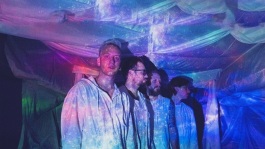Trending News|April 04, 2013 05:22 EDT
'Vikings' on History Channel Filled With Historical Inaccuracies?
There's a lot that can be said about the historical inaccuracies of History Channel's Vikings miniseries. The Vikings had never heard of the British Isles or the 'starboard' side of a ship. But does that take away from an epic new miniseries from History Channel?
For most of us that don't know anything about Viking culture, Vikings could seem like a breath of fresh air for those wanting to learn more; not dissimilar to the effect The Bible had on many non-believers. But like Mark Burnett's The Bible, the creators of Vikings use a little creative license to keep the story flowing.
With a Medieval Lit degree from college, I can tell you the way Vikings portrays the local government is skewed. For example, the local chieftain is referred to as Earl Haraldson. Referring to a Viking ruler this way would be the equivalent of calling the Queen of England, the Queen of Windsor. Instead of depicting an accurate representation of Viking government, Vikings creators, along with History Channel, defer to lazy figurative language to keep Ragnar (who wants freedom) in conflict and always in the face of oppression.
Though Vikings are depicted as a ruthless, violent people (a reputation they certainly earned) they also promoted a tradition of freedom and democracy.
It's unfortunate History Channel chose to sensationalize Viking culture, because when most tune in to the network they expect some level of respect for the past. Similar to The Bible, Vikings has incredible ratings but huge gaps in terms of historical accuracy.
History aside, the show is entertaining. Tune in this Sunday at 9/8c for Vikings episode 6, "Burial of the Dead" on History Channel.












